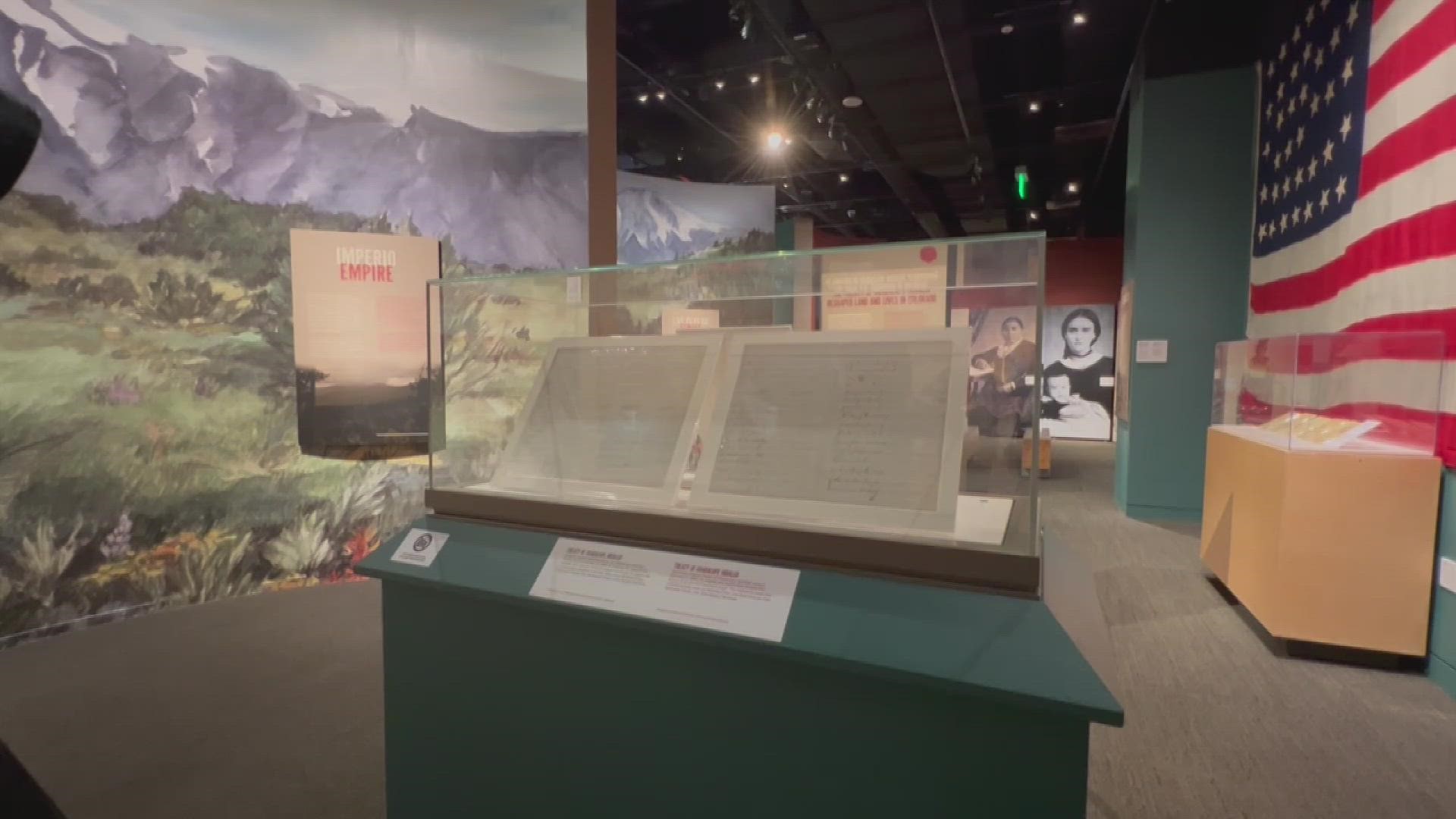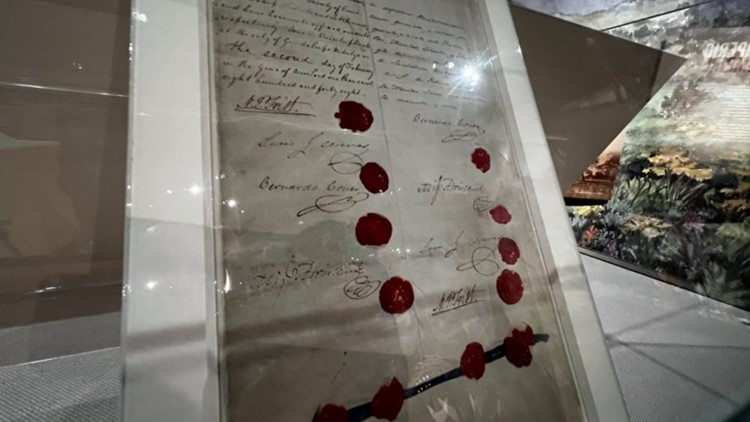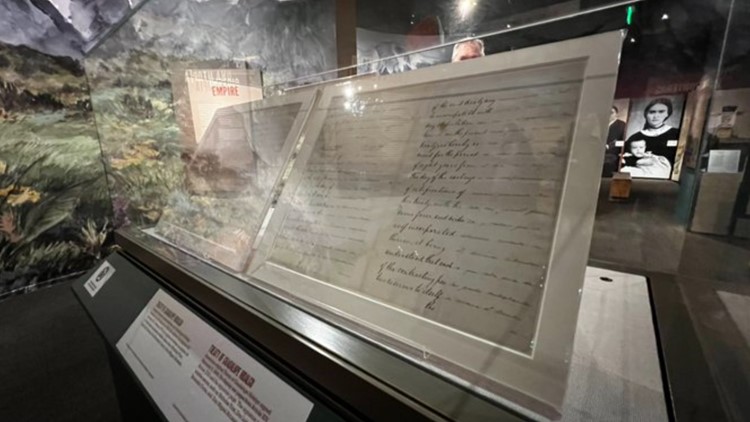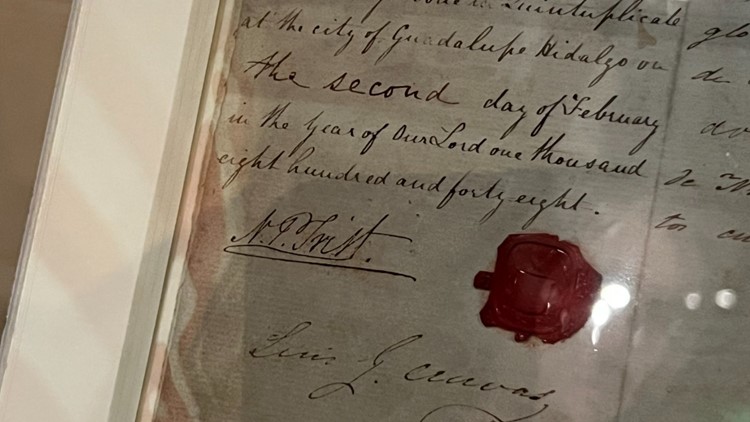DENVER — The Treaty of Guadalupe Hidalgo was signed 175 years ago this week, ending the Mexican-American War and prompting profound changes to cultures, land and identity among peoples who suddenly found the border had crossed them.
The National Archives loaned four pages of the treaty to History Colorado to be on display as part of the Borderlands Exhibit until May 22.
The treaty is a significant part of North American history that led Mexico to give up more than 500,000 square miles of its territory to the United States. That included portions of modern day Colorado.
In the wake of the treaty signing, the United States forced indigenous peoples onto reservations. Spanish land grants belonging to Hispanics and detribalized Native Americans (Genízaros) were stolen by corrupt land grabbers and the U.S. government.
Article X in the treaty, which would have protected the rights of grantees to Spanish and Mexican land grants, was stricken from the pages before it was signed.
The Treaty of Guadalupe Hidalgo on display at History Colorado
From land to identity, the historic agreement forever altered the course of history in the West, prompting a sudden and swift cultural change as American anglos began to continue westward expansion, seeking wealth and land.
“The Hispanic identity was definitely affected by the document,” said Nicki Gonzales, a history professor at Regis University.
“It meant that people who once thought of themselves as Mexican or Hispano, indigenous to the area, that they were now American citizens," Gonzales said. "They found themselves at the bottom of a pecking order. Their lands were taken away, as the industries they depended on were wiped away by the extracted industries that were brought in by the Anglo American."
If you have any information about this story or would like to send a news tip, you can contact jeremy@9news.com.
More 9NEWS stories by Jeremy Jojola:
SUGGESTED VIDEOS: Colorado’s History











